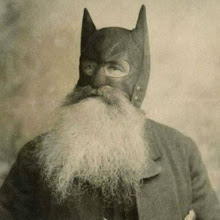In Defense Of The Trey

Interesting piece in yesterday's Times Magazine by Michael Sokolove about the lack of fundamentals in the NBA's game (read it before it goes offline later this week). I agree with much of what Sokolove says, which is pretty obvious: as the pro game has skewed younger, trolling high schools for talent (which causes a ripple effect down to middle schools, where 12- and 13-year-olds are hailed as The Next Big Thing), basic hoop skills are not being taught, and the old concept of team play has been replaced with Star Player and Supporting Cast. There are exceptions, like the San Antonio Spurs (and this year's Phoenix Suns). But by and large, as Sokolove points out, 18- and 19-year-old millionaires are given remedial ball lessons by assistant coaches at the pro level. Never used to be like this.
Sokolove offers a few suggestions. One, ban dunks. This will force players at the high school and college levels to work on their shooting skills instead of going for hi-light reel slams. Conceivably, yes, it would. As Sokolove reminds us (and those of us old enough to remember already know), the former ban from 1967-76 had this effect on marquee players like Kareem-Abdul Jabbar, Bill Walton, Julius Erving and David Thompson. But, as Sokolove concedes, this ain't gonna happen. Too much money at stake. Besides, several generations have been conditioned to the slam. To yank it from the game now would be merely reactionary. May as well go back to peach baskets and jump balls after every score.
Sokolove's other suggestion is simply ridiculous:
"The three-point shot is another matter altogether. No reason it should not just disappear. 'The dagger!' announcers sometimes call it, as if it were the shock-and-awe of the hardwood, a weapon that brings opposing players to their knees. The three-pointer is a corruption of the sport, a perversion of a century of basketball wisdom that held that the whole point of the game was to advance the ball closer to the basket. If its intent was to increase scoring, the three-point shot definitely has not done that, and if it was to make the game more wide open and exciting, it hasn't accomplished that either. The unintended consequence of the three-pointer has been to make the game more static as players 'spot up' outside the arc, waiting for the pass that will lead to the dagger."
This is a veiled attack on my beloved ABA, which introduced the three-pointer in 1967. Contrary to Sokolove's dim view, the trey opened up a conservative game and did indeed generate more scoring for quite some time. It also gave a much-needed jolt to the college game, where coaches like Rick Pitino incorporated it as part of a full-court attack. If contemporary players are having trouble hitting threes, that's not the ABA's fault. There were specialty players, like Billy Keller, Louie Dampier and Mack Calvin, whose job it was to hit those shots when needed, or to act as decoys to open up the inside game. Today it seems that anyone and everyone takes a crack from beyond the arc, and naturally many of them miss and miss badly. The three-pointer was designed in a period where there were more pure shooters. Getting rid of it will not increase shooting percentages. Practice, discipline and focusing on fundamentals will do that. Hell, many players cannot hit free throws with any consistency. Should we eliminate foul shooting too?
Sokolove's right about one thing -- it may take the ongoing influx of foreign players to show Americans how the game should be played. We saw that in Athens last summer. American "individualism" goes only so far. Today, team play is the new cutting edge.


<< Home